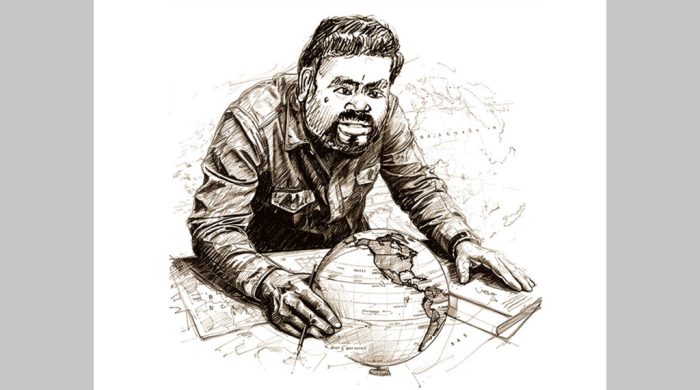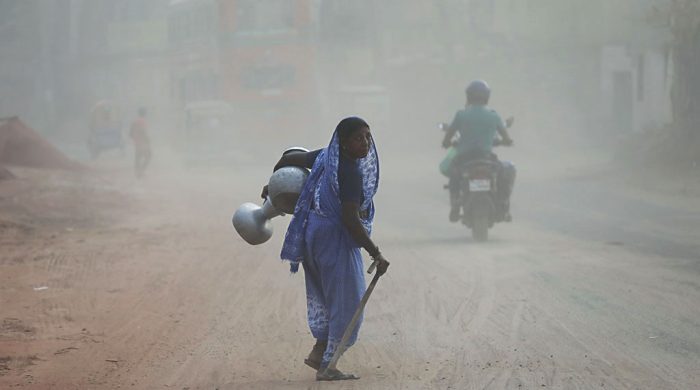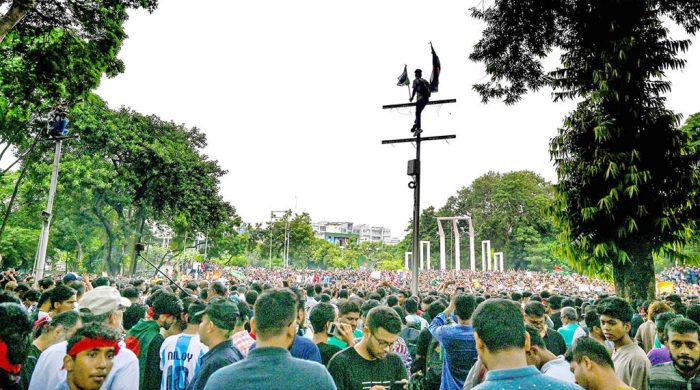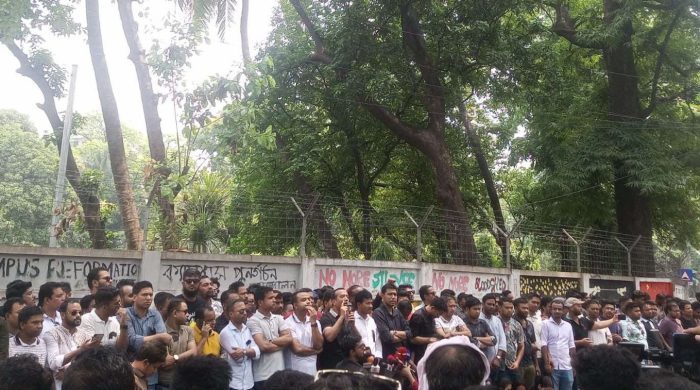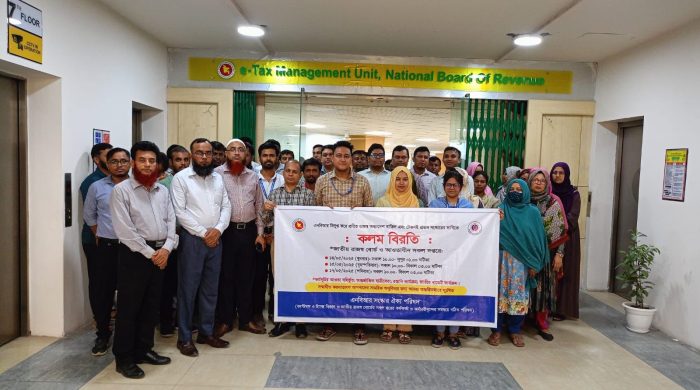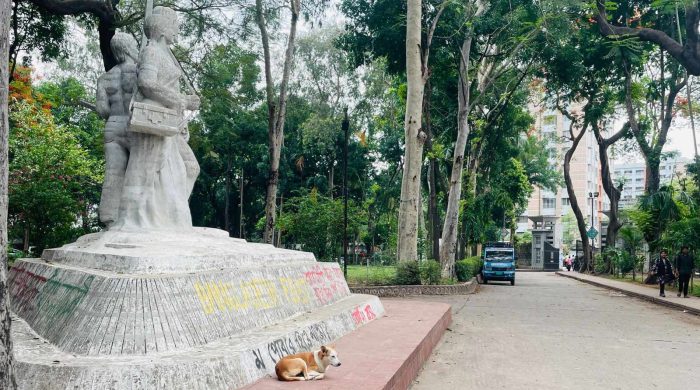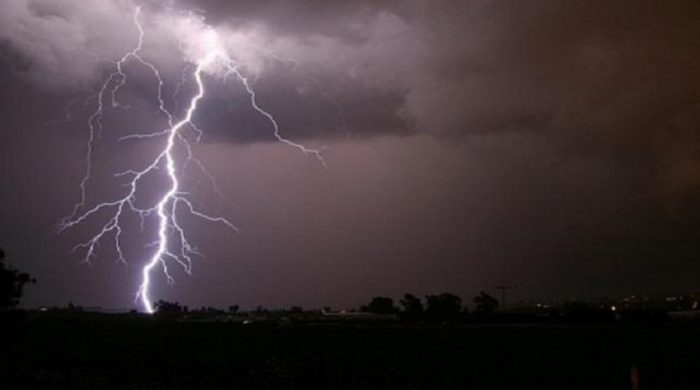Civilian deaths of US war on terror

- Update Time : Thursday, April 28, 2022
- 112 Time View
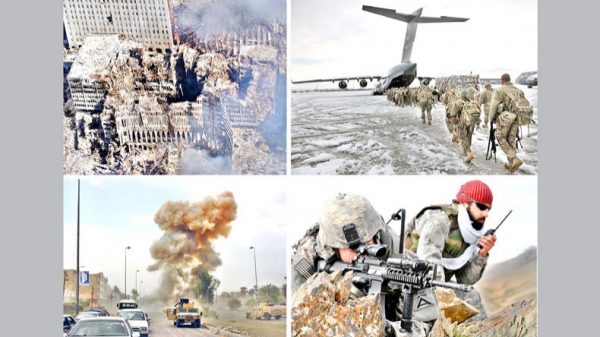
MADOGAZ Musa Abdullah still remembers the phone call. But what came next was a blur. He drove for hours, deep into the Libyan desert, speeding towards the border with Algeria. His mind buckled, his thoughts reeled, and more than three years later, he’s still not certain how he made that six-hour journey.
The call was about his younger brother, Nasser, who, as he told me, was more than a sibling to him. He was also a close friend. Nasser was polite and caring. He loved music, sang, and played the guitar. Jimi Hendrix, Carlos Santana, and Bob Marley were his favourites.
Abdullah finally found Nasser near the village of Al Awaynat. Or, rather, he found all that remained of him. Nasser and 10 others from their village of Ubari had been riding in three SUVs that were now burnt-out hunks of metal. The 11 men had been incinerated. Abdullah knew one of those charred corpses was his brother, but he was at a loss to identify which one.
If these bodies had recently been found strewn about in the village of Staryi Bykiv, in the streets of Bucha, outside a train station in Kramatorsk, or elsewhere in Ukraine where Russian forces have regularly killed civilians, the images would have been splashed across the internet, earning worldwide attention and prompting fierce — and justified — outrage. Instead, the day after the attack, November 29, 2018, US Africa Command issued a press release that was met with almost universal silence.
‘In coordination with the Libyan Government of National Accord, US Africa Command conducted a precision air strike near Al Awaynat, Libya, November 29, 2018, killing 11 al-Qaeda in the Islamic Maghreb, or AQIM, terrorists and destroying three vehicles,’ it read. ‘At this time, we assess no civilians were injured or killed in this strike.’ Photos of the aftermath of the attack, posted on Twitter that same day, have been retweeted less than 30 times in the last three and a half years.
Ever since then, Abdullah and his Tuareg community in Ubari have been insisting to anyone who would listen that Nasser and the others riding in those vehicles were civilians. And not just civilians, but GNA veterans who had fought terrorist groups like al-Qaeda and even, alongside the United States two years earlier, the Islamic State in the city of Sirte. For more than three years now, despite public protests and pleas to the Libyan government for an impartial investigation, the inhabitants of Ubari have been ignored. ‘Before the strike, we trusted AFRICOM. We believed that they worked for the Libyan people,’ Abdullah told me. ‘Now, they have no credibility. Now, we know that they kill innocent people.’
Hellfire in Libya
EARLIER this month, Abdullah, along with a spokesperson for his ethnic Tuareg community and representatives of three non-governmental organisations — the European Centre for Constitutional and Human Rights, Italy’s Rete Italiana Pace e Disarmo, and Reprieve, a human rights advocacy group — filed a criminal complaint against colonel Gianluca Chiriatti, the former Italian commander at the US air base in Sigonella, Italy, from which that American drone took off. They were seeking accountability for his role in the killing of Nasser and those other 10 men. The complainants requested that the public prosecutor’s office in Siracusa, where the base is located, prosecute colonel Chiriatti and other Italian officials involved in that air strike for the crime of murder.
‘The drone attack of November 29, 2018 where 11 innocent people lost their lives in Libya is part of the broader US programme of extrajudicial killings. This programme is based on a notion of pre-emptive self-defence that does not meet the canons of international law, as the use of lethal attacks of this nature is only legitimate where the state is acting to defend itself against an imminent threat to life. In this circumstance, the victims posed no threat,’ reads the criminal complaint. ‘In the light of this premise, the drone attack on Al Awaynat on November 29, 2018 stands in frontal contrast to the discipline, Italian and international, regarding the use of lethal force in the context of law enforcement operations.’
For the last two decades, the United States has been conducting an undeclared war across much of the globe, employing proxy forces from Africa to Asia, deploying commandos from the Philippines to the West African nation of Burkina Faso, and conducting air strikes not only in Libya, but in Afghanistan, Iraq, Pakistan, Somalia, Syria, and Yemen. Over those years, the US military has taken pains to normalise the use of drone warfare outside established war zones while relying on allies around the world — as at that Italian base in Siracusa — to help conduct its global war.
‘Clearly, a drone operation employing lethal force is not routine,’ said Chantal Meloni, legal advisor at the European Centre for Constitutional and Human Rights. ‘While AFRICOM is directly responsible, the Italian commander must have known about and approved the operation and can, therefore, be criminally responsible as an accomplice for having allowed the unlawful lethal attack.’
That November 2018 drone attack in Libya was anything but a one-off strike. During just six months in 2011, alone, US MQ-1 Predator drones flying from Sigonella conducted 241 air strikes in Libya during Operation Unified Protector — the NATO air campaign against the then Libyan autocrat Muammar Gaddafi — according to retired lieutenant colonel Gary Peppers, the former commander of the 324th Expeditionary Reconnaissance Squadron. The unit was responsible, he told The Intercept in 2018, for ‘over 20 per cent of the total of all Hellfire missiles expended in the 14 years of the system’s deployment.’
The US air war in Libya accelerated in 2016 with Operation Odyssey Lightning. That summer, the Libyan Government of National Accord requested American help in dislodging Islamic State fighters from Sirte. The Obama administration designated the city an ‘area of active hostilities,’ loosening guidelines designed to prevent civilian casualties. Between August and December of that year, according to an AFRICOM press release, the US carried out in Sirte alone ‘495 precision air strikes against vehicle borne improvised explosive devices, heavy guns, tanks, command and control centres, and fighting positions.’
Shores of Tripoli
THOSE military strikes were nothing new. The United States has been conducting attacks in Libya since before there even was a Libya — and almost a United States. In his first address to Congress in 1801, president Thomas Jefferson spoke of coastal kingdoms in North Africa, including the ‘least considerable of the Barbary States,’ Tripoli, now the capital of modern Libya. His refusal to pay additional tribute to the rulers of those kingdoms in order to stop their state-sponsored privateers from seizing American sailors and cargo kicked off the Barbary Wars. In 1804, lieutenant Stephen Decatur led a daring night-time mission, boarding a captured US ship, killing its Tripolitan defenders, and destroying it. And an attack the next year by nine Marines and a host of allied mercenaries on the North African city of Derna ensured that ‘the shores of Tripoli’ would have prime placement in the marine corps hymn.
Libya has also been a long-time proving ground for new forms of air war. In November 1911 — 107 years to the month before that drone attack killed Nasser Musa Abdullah — Italian lieutenant Giulio Gavotti conducted the world’s first modern air strike. ‘Today I have decided to try to throw bombs from the aeroplane,’ he wrote in a letter to his father, while deployed in Libya to fight forces loyal to the Ottoman empire. ‘I take the bomb with my right hand, pull off the security tag and throw the bomb out, avoiding the wing.’
Gavotti not only pioneered the idea of launching air raids on troops far from the traditional front lines of a war, but also the targeting of civilian infrastructure when he bombed an oasis that served as a social and economic centre. As Thomas Hippler put it in his book Governing from the Skies, Gavotti introduced aerial attacks on ‘hybrid targets’ that ‘indifferently mingled civilian and military objectives.’
More than a century later, in 2016, Operation Odyssey Lightning again made Libya ground zero for the testing of new air-war concepts — in this case, urban combat involving multiple drones working in combination with local troops and US special operations forces. As one of the drone pilots involved was quoted as saying in an air force news release: ‘Some of the tactics were created and some of the persistent attack capabilities that hadn’t been used widely before were developed because of this operation.’
According to colonel Case Cunningham, commander of the 432nd Expeditionary Wing at Creech Air Force Base in Nevada — the headquarters of the air force’s drone operations — about 70 per cent of the MQ-9 Reaper drone strikes conducted during Odyssey Lightning were close-air-support missions backing up local Libyan forces engaged in street-to-street combat. The drones, he reported, often worked in tandem with one another, as well as with marine corps attack helicopters and jets, helping to guide the air strikes of those conventional aircraft.
Deaths of thousands
DESPITE hundreds of attacks in support of the Libyan Government of National Accord, the employment of US proxies in counter-terrorism missions, combat by American commandos, and more than $850 million in US assistance since 2011, Libya remains one of the most fragile states on earth. Earlier this year, US president Joe Biden renewed its ‘national emergency’ status, first invoked by president Barack Obama in 2011. ‘Civil conflict in Libya will continue until Libyans resolve their political divisions and foreign military intervention ends,’ wrote Biden, failing to mention the US ‘foreign military intervention’ there, including that November 2018 airstrike. ‘The situation in Libya continues to pose an unusual and extraordinary threat to the national security and foreign policy of the United States.’
In early 2021, the Biden administration imposed limits on drone strikes and commando raids outside of conventional war zones, while launching a review of all such missions, and began writing a new ‘playbook’ to govern counter-terrorism operations. More than a year later, the results, or lack thereof, have yet to be made public. In January, defence secretary Lloyd Austin directed subordinates to draw up a ‘civilian harm mitigation and response plan’ within 90 days. That, too, has yet to be released.
Until the defence department overhauls its air-strike policies, civilians will continue to die in attacks. ‘The US military has a systemic targeting problem that will continue to cost civilians their lives,’ said Marc Garlasco, formerly the Pentagon’s chief of high-value targeting — in charge, that is, of the effort to kill Iraqi autocrat Saddam Hussein in 2003 — and now, the military adviser for PAX, a Dutch civilian protection organisation. ‘Civilian deaths are not discrete events; they are symptoms of larger problems such as a lack of proper investigations, a faulty collateral-damage estimation methodology, overreliance on intelligence without considering open-source data, and a policy that does not recognise the presumption of civilian status.’
Such ‘larger problems’ have been revealed again and again. Last March, for example, the Yemen-based group Mwatana for Human Rights released a report examining 12 US attacks in Yemen, 10 of them airstrikes, between January 2017 and January 2019. Its researchers found that at least 38 Yemeni non-combatants had been killed and seven others injured in those attacks.
A June 2021 Pentagon report on civilian casualties did acknowledge one of those incidents, the death of a civilian in al-Bayda, Yemen, on January 22, 2019. Mwatana’s investigation determined that the attack killed Saleh Ahmed Mohamed al Qaisi, a 67-year-old farmer who locals said had no terrorist affiliations. The US had previously acknowledged four to 12 civilian deaths in a raid by Navy SEALs on January 29, 2017, also chronicled by Mwatana, though it reported a higher death toll. As for the remaining allegations, Central Command, which oversees US military operations in the Middle East, told Mwatana in an April 2021 letter that it was ‘confident that each air strike hit its intended al-Qaeda targets and nothing else.’
Rigorous investigative reporting by The New York Times on the last US drone strike of the Afghan war in August 2021 forced an admission from the Pentagon. What general Mark Milley, the chairman of the joint chiefs of staff, had originally deemed a ‘righteous strike’ had actually killed 10 civilians, seven of them children. A subsequent Times investigation revealed that a 2019 US air strike in Baghuz, Syria, had killed up to 64 non-combatants, a toll previously obscured through a multilayered cover-up. The Times followed that up with an investigation of 1,300 reports of civilian casualties in Iraq and Syria, demonstrating, wrote reporter Azmat Khan, that the American air war in those countries was ‘marked by deeply flawed intelligence, rushed and often imprecise targeting, and the deaths of thousands of civilians, many of them children, a sharp contrast to the American government’s image of war waged by all-seeing drones and precision bombs.’
Since the Sirte campaign ended in late 2016, US attacks in Libya have slowed considerably. AFRICOM conducted seven declared air strikes there in 2017, six in 2018, four in 2019, and none since. But the US military has made little effort to re-evaluate past strikes and the civilian casualties they caused, including the November 2018 attack that killed Nasser Musa Abdullah. ‘US Africa Command followed the civilian casualty assessment process in place at the time and determined that the reports were unsubstantiated,’ said AFRICOM spokesperson Kelly Cahalan. Despite the criminal complaint filed on April 1, the command is not re-examining the case. ‘There is nothing new or different regarding the November 30, 2018 air strike,’ Cahalan told me by email.
Africa Command has clearly moved on, but Abdullah can’t. Memories of his brother and those charred bodies are irrevocably lodged in his mind but get caught in his throat. ‘I was in shock,’ he told me when discussing the phone call that preceded his dash across the desert. ‘I’m so sorry, but I can’t explain in words what I felt.’
Abdullah was similarly stuck when he attempted to describe the grisly scene that greeted him hours later. He was eloquent in speaking about the justice he seeks and how being branded a ‘terrorist’ robbed his brother and their community of dignity. But of his final memory of Nasser, there is simply nothing that can be said, not by him anyway. ‘What I saw was so terrible,’ he told me, his voice rising, ragged and loaded with pain. ‘I can’t even describe it.’
TomDispatch.com, April 26. Nick Turse is the managing editor of TomDispatch and a fellow at the Type Media Centre.





